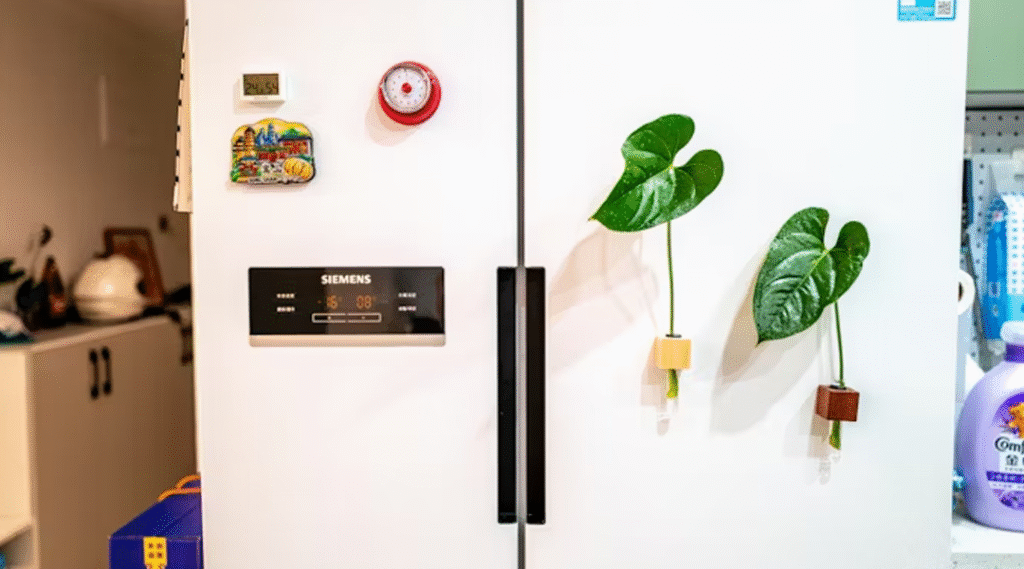Smart refrigerators represent a transformative leap in kitchen technology, marrying traditional cooling functions with digital connectivity, AI-driven intelligence, and seamless integration into the broader Internet of Things (IoT) ecosystem. As consumers demand greater convenience, waste reduction, and personalized experiences, appliance makers have raced to embed sophisticated sensors, touchscreens, and cloud-based services into what was once a simple cold box. This article explores how smart refrigerators emerged, the benefits they deliver, their evolving market landscape, leading vendors and flagship models, side‑by‑side product comparisons, and strategic recommendations for key players aiming to dominate this booming sector.
Origins: How Smart Refrigerators Came to Be
The concept of a “connected fridge” surfaced in the mid‑2000s as broadband internet and home‑networking technologies matured. Early prototypes showcased by CES exhibitors featured built‑in cameras to monitor contents, rudimentary touchscreen interfaces, and email notifications when supplies ran low. However, infancy‑stage barriers—high costs, clunky UIs, and limited app ecosystems—kept adoption minimal.
By the early 2010s, advances in low‑power wireless protocols (Wi‑Fi, Bluetooth Low Energy), cloud computing, and mobile app development converged, making–connected home appliances viable. Samsung’s introduction of its Family Hub line in 2016, with integrated tablets, meal‑planning apps, and internal cameras viewable via smartphone, marked the first commercially successful smart refrigerator. Since then, incremental innovations—voice‑assistant integration, AI‑powered expiration alerts, and energy‑management dashboards—have defined the evolution of the category.
Benefits: What Smart Refrigerators Deliver
- Inventory Management & Waste Reduction
Built‑in cameras and barcode‑scanning apps track contents in real time, alerting users to expiring items and suggesting recipes based on what’s on hand. Studies indicate that households using smart‑fridge reminders can cut food waste by up to 20%, translating to annual savings of $200–$300 per household. - Convenience & Remote Control
Whether checking milk levels on the way home or pre‑cooling the fridge remotely via a smartphone, owners enjoy unprecedented control. Voice‑assistant support (e.g., Amazon Alexa, Google Assistant) further streamlines hands‑free operation. - Energy Efficiency
Energy‑monitoring modules analyze usage patterns and optimize compressor cycles. Some models adapt cooling based on door‑opening frequency and ambient conditions, yielding up to 15% lower energy consumption compared to traditional units. - Family Connectivity & Entertainment
Large touchscreens serve as digital whiteboards for calendars and grocery lists, photo frames, and hubs for streaming music or displaying news—turning the kitchen into a social command center. - Advanced Diagnostics & Maintenance
Self‑diagnostic alerts notify homeowners of potential issues—such as low refrigerant levels or door‑seal degradation—enabling preemptive service calls and reducing repair costs.
Market Trends: Growth and Adoption
The global smart‑refrigerator market has grown at a compound annual rate of roughly 8–10% over the past five years, driven by rising disposable incomes, urbanization, and the mainstreaming of smart‑home ecosystems. By 2024, smart units represented approximately 12% of total refrigerator shipments in North America and Europe, with projections pointing to 20% penetration by 2030. In Asia–Pacific markets, rapid adoption of 5G and government incentives for energy‑efficient appliances are accelerating uptake, with smart refrigerator sales in China increasing nearly 25% year‑over‑year in 2023.
Key Players and Flagship Models
- Samsung Family Hub Series
Features a 21‑inch touchscreen, four internal cameras, AI‑driven meal planning, and SmartThings integration. Known for robust third‑party app support. - LG InstaView ThinQ
Offers knock‑to‑see-through glass doors, Whisper‑quiet compressor technology, and compatibility with LG’s ThinQ mobile app and voice assistants. - GE Profile Series
Combines a sleeker 10‑inch LCD display with built‑in Amazon Alexa functionality, advanced water filtration status monitoring, and connected diagnostics via the GE Appliances app. - Whirlpool Smart French Door
Integrates with Google Assistant for voice control, provides usage analytics in the Whirlpool app, and includes a bulk‑storage optimized “FreshFlow” air filter system.
Product Comparison
| Feature | Samsung Family Hub | LG InstaView ThinQ | GE Profile | Whirlpool Smart Door |
|---|---|---|---|---|
| Screen Size | 21″ touchscreen | 29″ glass panel | 10″ LCD | 7″ LCD |
| Internal Cameras | 4 cameras | 2 cameras | 1 camera | None |
| Voice Assistant Support | Bixby, Alexa | Google Assistant | Amazon Alexa | Google Assistant |
| Energy‑Monitoring | Yes | Yes | Basic | Basic |
| App Ecosystem | SmartThings & 3P apps | ThinQ | GE Appliances app | Whirlpool app |
| Typical Price (USD) | $3,200–$3,800 | $2,800–$3,400 | $2,500–$3,000 | $2,000–$2,500 |
Recommendations for Key Players
- Enhance AI‑Driven Insights
Invest in advanced computer‑vision algorithms to improve food‑recognition accuracy and predictive expiration alerts. Partnerships with nutritional‑data platforms can add value with tailored meal‑planning services. - Expand Ecosystem Partnerships
Open up APIs and collaborate with home‑automation, grocery‑delivery, and recipe‑platform providers to create a seamless experience that locks in users and boosts recurring app revenues. - Optimize for Sustainability
Emphasize eco‑friendly refrigerants and closed‑loop recycling of compressor components. Highlight energy‑savings certifications (ENERGY STAR, EU Energy Label) to appeal to environmentally conscious consumers. - Flexible Pricing & Financing
Offer subscription bundles that include extended warranties, premium app features, and concierge‑style maintenance services. Partner with retailers and utilities to provide financing options or rebate programs. - Focus on User Experience
Simplify onboarding with guided voice prompts and intuitive mobile‑app tutorials. Leverage over‑the‑air firmware updates to continuously refine UI/UX and introduce new features without requiring hardware upgrades.
From Niche Curiosities to Integral Components
Smart refrigerators have evolved from niche curiosities to integral components of modern connected homes, delivering tangible benefits in convenience, cost savings, and sustainability. As adoption accelerates globally, competition intensifies among appliance giants, tech newcomers, and ecosystem partners. By prioritizing AI‑powered insights, broad interoperability, sustainable design, and innovative service models, manufacturers can capture market share and lead the next wave of kitchen innovation—where even the humble fridge is, indeed, “smart.”
More relative articles:
Romo’s Cleaning Debut: Can DJI Dominate the Robot Vacuum Arena?
Beyond Surveillance: Mapping the Smart Camera Ecosystem and Winning Strategies
As for in-depth insight articles about AI tech, please visit our AI Tech Category here.
As for in-depth insight articles about Auto Tech, please visit our Auto Tech Category here.
As for in-depth insight articles about Smart IoT, please visit our Smart IoT Category here.
As for in-depth insight articles about Energy, please visit our Energy Category here.
If you want to save time for high-quality reading, please visit our Editors’ Pick here.



